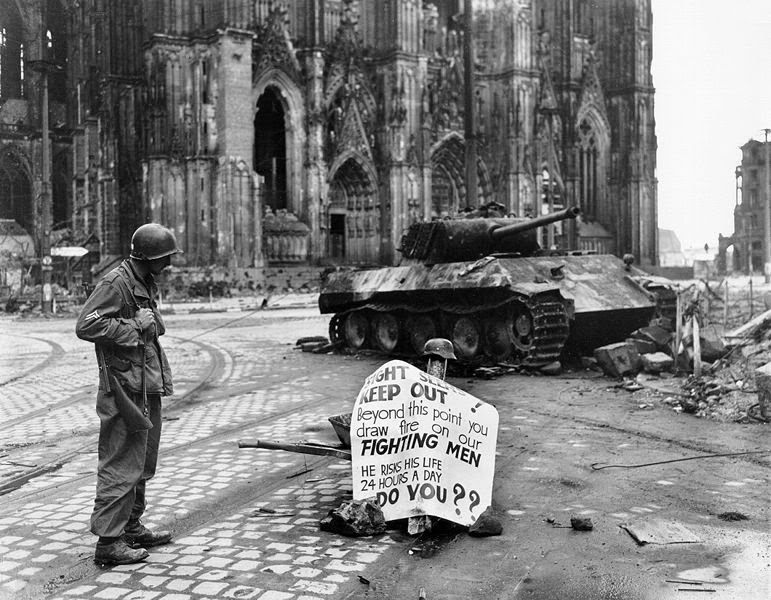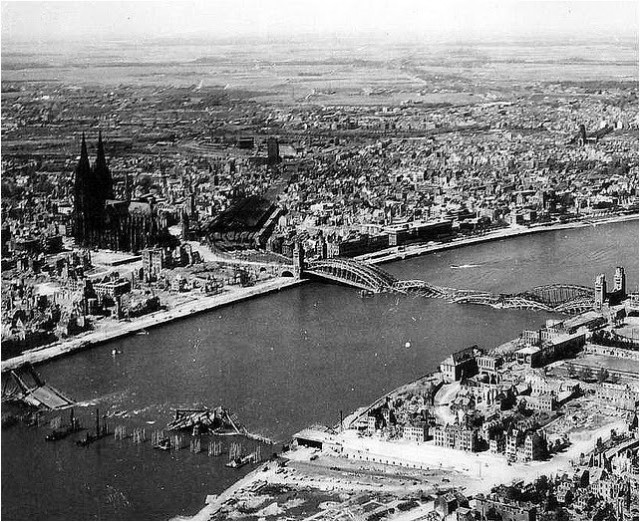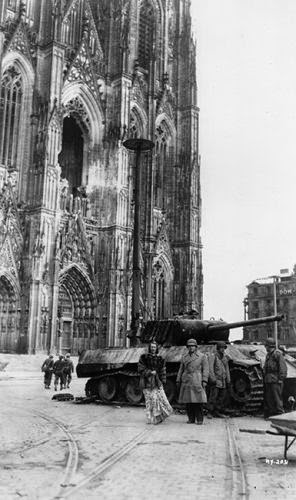The tank battle at Cologne Cathedral, although brief, is perhaps the most famous of all time. Let’s have a look this deliberate wartime situation.
The Germans had been forced out of France and had exhausted most of their reserves in the Battle of the Bulge. The British and the Americans were closing on the Rhine River. Reaching the Rhine, though, was one thing. Crossing it was entirely another.
The birth of the German city of Cologne goes back to the Roman Empire and was built on both sides of the Rhine. The oldest section was on the west side of the river, highlighted by the Cologne Cathedral, which is a Roman Catholic cathedral.
It took an extraordinary amount of time to build; over 800 years, starting in 1248 and ultimately completed in 1880. At the time, the cathedral’s completion signified the alliance of many individual kingdoms and the architecture was a work of national significance, which symbolized the unification of Germany.
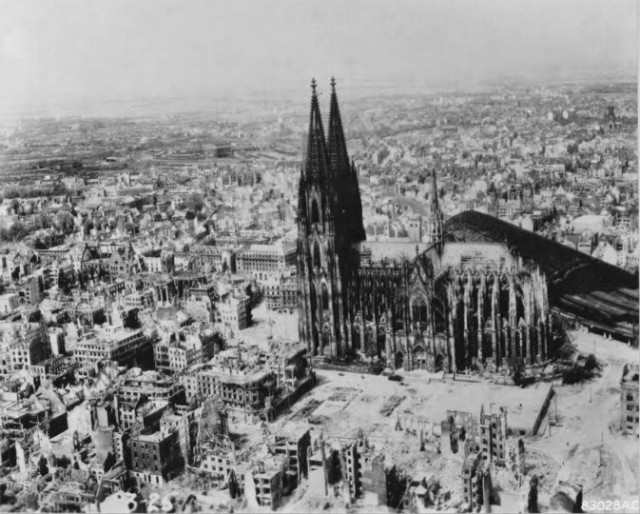
There is a railroad bridge behind the cathedral that had to be kept out of Allied control because the Nazis were setting up a defensive perimeter by using the river as the actual line of defense.
However, by the time the Allies arrived in Cologne, the railroad bridge had been destroyed by bombs and it was no longer useful to either the Nazis or the Allies.
Cologne was bombed over and over again during the war by Allied bombers because it was a major German city that was closest to England.
It became a ravaged, smoking hell. The Cathedral was made of stone and thus, did not burn down, perhaps the only thing that saved it. By March 1945, the Allies had launched no less than 262 air assaults against Cologne, which resulted in a loss of 95% of its population.
Of significance was that Cologne was the target of the first 1,000 bomber group assault ever amassed on May 31, 1942. Except for essential personnel and a few German troops, Cologne was nothing but an empty shell of a city.
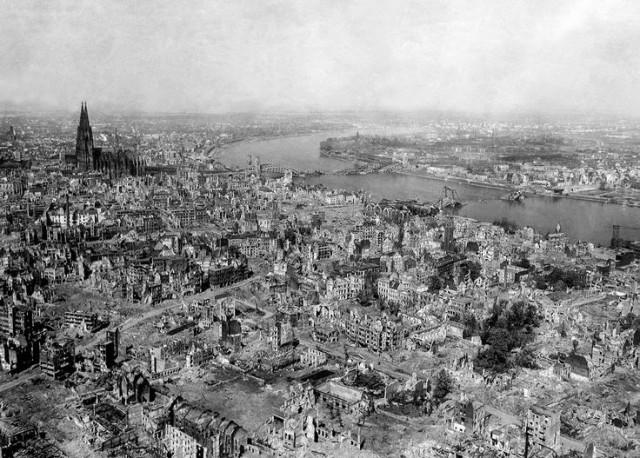
The Cologne Cathedral had been struck by the raids, but it remained standing and, from a distance, appeared unwavering to the world conflict.
The cathedral’s resistance to destruction amidst the devastation in the city was seen with a mix of shock and awe by all Germans, citizens and Nazis alike.
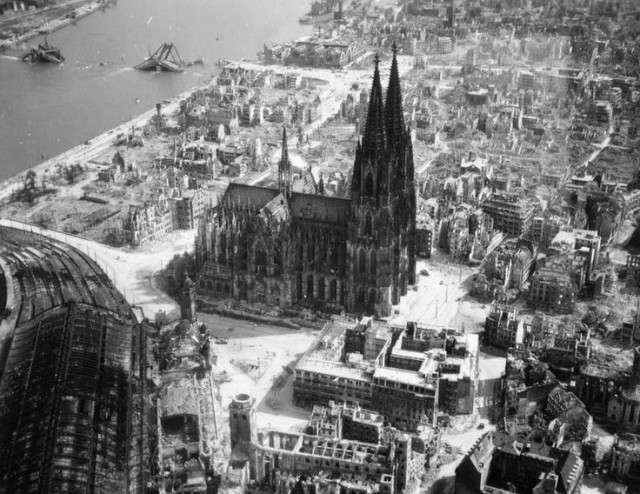
On March 6, 1945, there were no Allied forces across the Rhine, although the next day the Remagen Bridge further south would fall into Allied hands. The Germans were retreating to the banks of the Rhine as quickly as they could to prevent Allied river crossings.
There was no point in confronting the enemy on the west side of the river when the great river Rhine offered the utmost protection as a defensive perimeter.
The US 3rd Armored Division arrived in Cologne that day. Two medium Sherman Tanks supported the infantry as they advanced toward the river and the cathedral. There was too much debris on the streets, so they stopped just a little ways from the cathedral.
The lead Sherman was hit by a German tank, destroying the Sherman and killing three of the crew of five. The GIs quickly learned that the enemy tank was a medium Panther tank, an older model with a command hatch above the gun turret that could easily destroy a Sherman tank.
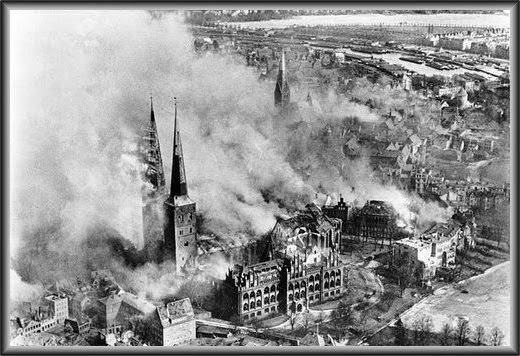
The other Sherman realized it was no match for the Nazi tank and retreated. They called a nearby T26 (Pershing) for help and waited. The US T26 was an extraordinary tank, and very rare. It was the masterpiece of World War II tank development by the US.
That there was a T26 in Cologne, much less only a few streets over was an extraordinary piece of luck for the advancing Americans. The Pershing was much better than the Sherman and was pretty much an equal to any tank in the world.
The spires of the cathedral loomed above a wasteland of debris and rubble. It was damaged and scarred: BUT IT STILL STOOD! Its symbolism only grew – it was the breathing, pulsating heart of the genuine German spirit, the essence that pre-dated the Nazis by centuries.
The cathedral looked impenetrable! It took 70 bomb hits during the war. The bridge was blown, so the tank had nothing to defend… or did it?
The Pershing was driving on a street parallel to the Panther. When it reached an intersection, stopped briefly, took aim when it saw the Panther, and then resumed its path, moving just slightly further into the intersection and opened fire while on the move, not stopping, so as not to present a target to the Panther.
The Pershing took a passing potshot at the German Panther; it was a direct hit!
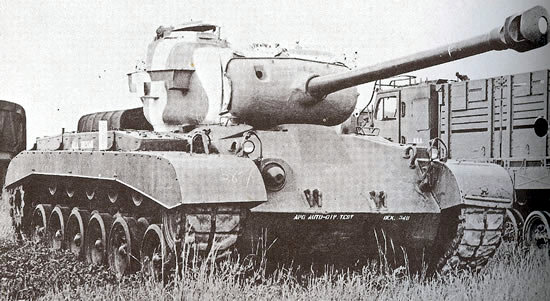
One can only imagine the feeling of the Pershing crew seeing the Panther just sitting there waiting for them, and the Panther all set to fire with the gun pointed straight at the Pershing.
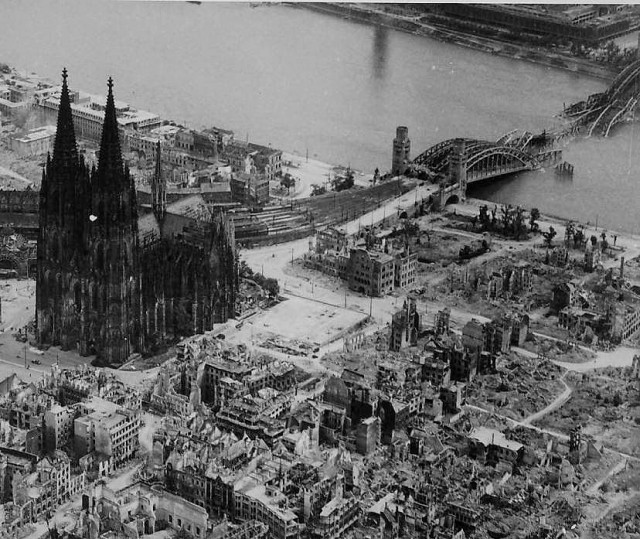
Why did the Panther hesitate and not fire in that instant? It had the time it needed; if only a split second, to destroy the American tank. It could have been because of the confusion of the gun crew – at first glance, the Pershing looked remarkably like it could have been another German tank.
Or, it could have delayed firing for any number of other reasons, such as the gun being jammed, or taking that extra split second to line up the perfect shot, the Nazis may have been surprised that the US tank fired while on the move, etc.
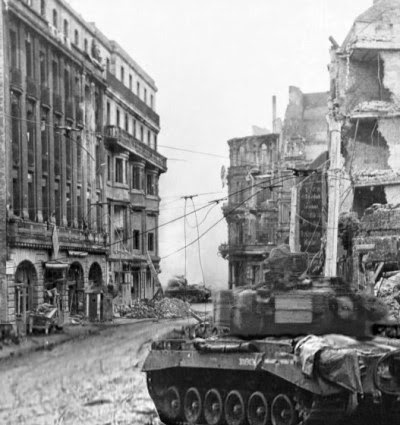
A question frequently asked is why the German Panther was stationary in that exact spot waiting patiently for the Americans. Some have referred to it as sort of a ‘last stand’ type of effort, which was common as the war was nearing an end.
It was probably not a typical ‘last stand’ for ‘comrade and country’ but a stand for the symbol of Germany – the Cologne Cathedral.
The Panther crew could easily have retreated across the river, but they chose to stay and fight. Not for a military victory or a military defeat, but to defend the Cologne Cathedral – the symbol of Germany.
Video
A 10 minute documentary tells the story of the battle:
https://www.youtube.com/watch?v=nGgXOXANZ14
